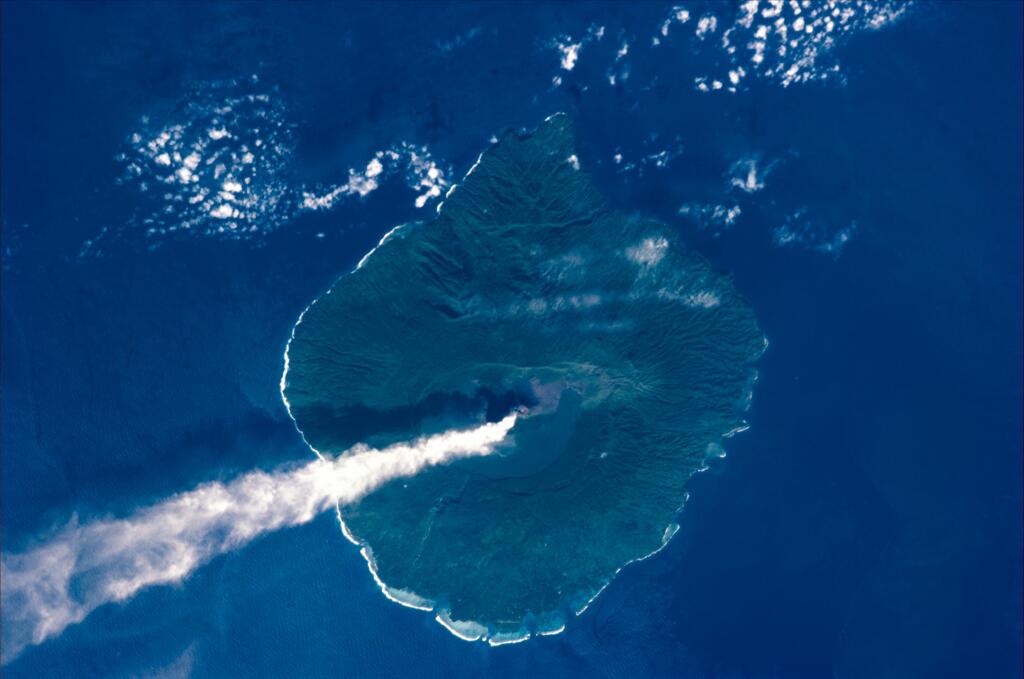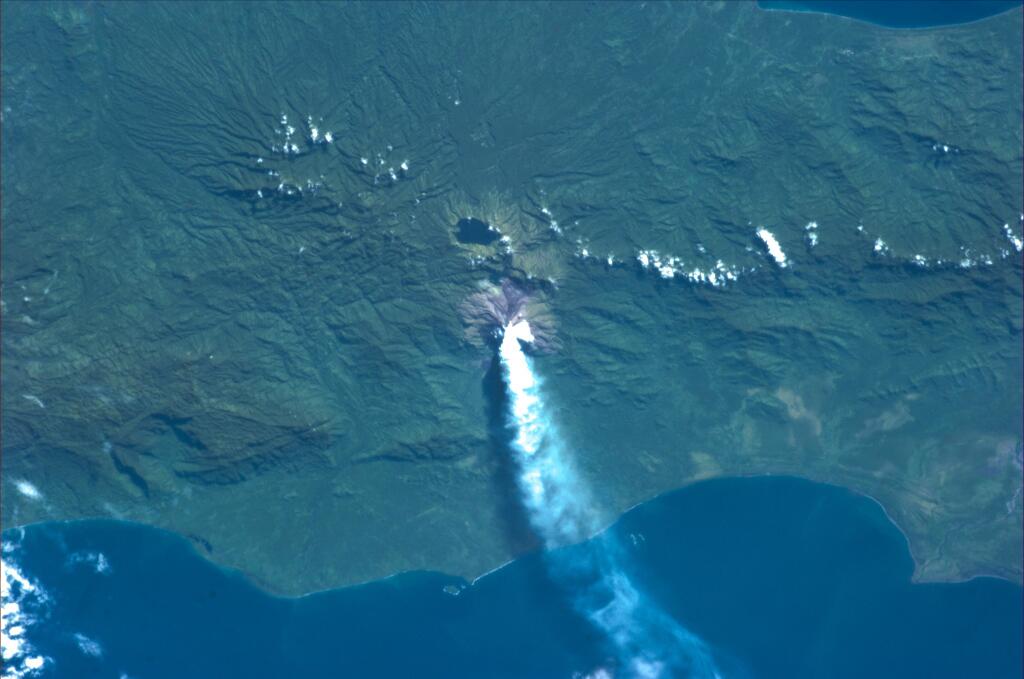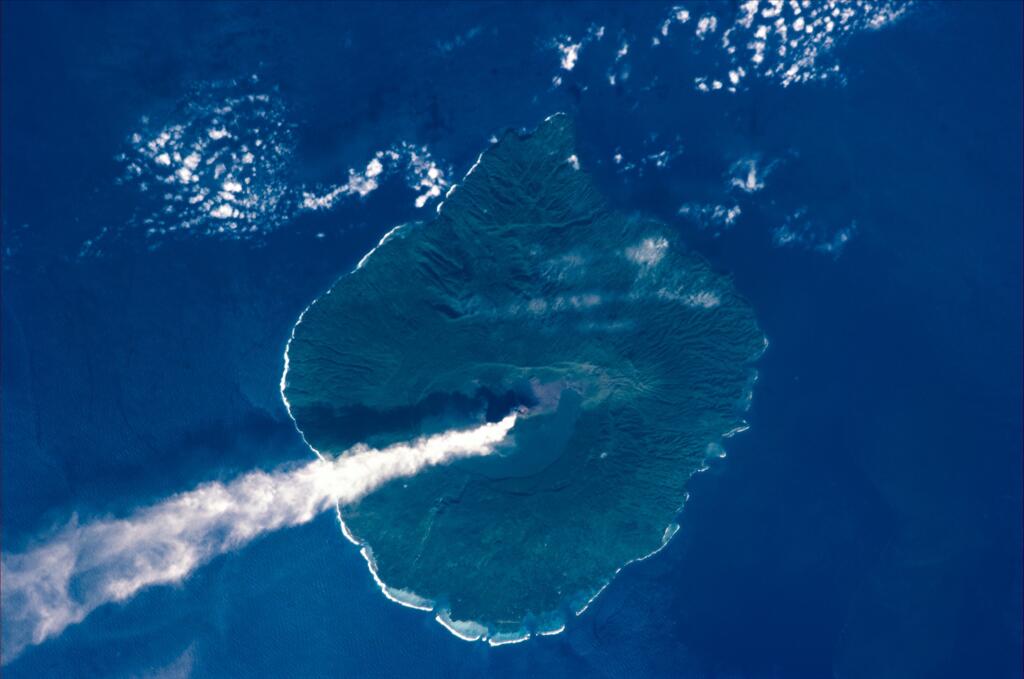Italian astronaut aboard ISS captured two active volcanoes in one orbit

Luca Parmitano is an Italian astronaut working for ESA aboard the International Space Station, where he will stay for six moths.`Volare`(`to fly` in Italian) is the name of his own mission to symbolize the search for new frontiers and opportunities for discovery.
In less then a week of his six month mission on board the ISS, Parmitano has already captured many images of stunning landscapes on our planet viewed from space, including pictures of Bagana volcano, Papua New Guinea and Paluweh volcano, Indonesia.
"What did I say about active volcanoes?", wrote the Italian astronaut on his Twitter account, and added "I can’t believe I saw 2 in one orbit!".

Bagana volcano captured by Luca Parmitano (Courtesy of Luca Parmitano/ISS/NASA)
Bagana volcano, occupying a remote portion of central Bougainville Island, is one of Melanesia's youngest and most active volcanoes. Bagana is a massive symmetrical, roughly 1750-m-high lava cone largely constructed by an accumulation of viscous andesitic lava flows. The entire lava cone could have been constructed in about 300 years at its present rate of lava production. Eruptive activity at Bagana is frequent and is characterized by non-explosive effusion of viscous lava that maintains a small lava dome in the summit crater, although explosive activity occasionally producing pyroclastic flows also occurs. Lava flows form dramatic, freshly preserved tongue-shaped lobes up to 50-m-thick with prominent levees that descend the volcano's flanks on all sides.

Paluweh volcano, Indonesia viewed from ISS (Courtesy of Luca Parmitano/ISS/NASA)
Paluweh volcano, also known as Rokatenda, forms the 8-km-wide island of Paluweh north of the volcanic arc that cuts across Flores Island. Although the volcano rises about 3000 m above the sea floor, its summit reaches only 875 m above sea level. The broad irregular summit region contains overlapping craters up to 900 m wide and several lava domes. Several flank vents occur along a NW-trending fissure. The largest historical eruption of Paluweh occurred in 1928, when a strong explosive eruption was accompanied by landslide-induced tsunamis and lava dome emplacement.
Sources: AstroLuca, Global Volcanism Program
Featured image: Paluweh volcano, Indonesia viewed from ISS (Courtesy of Luca Parmitano/ISS/NASA)

Commenting rules and guidelines
We value the thoughts and opinions of our readers and welcome healthy discussions on our website. In order to maintain a respectful and positive community, we ask that all commenters follow these rules.